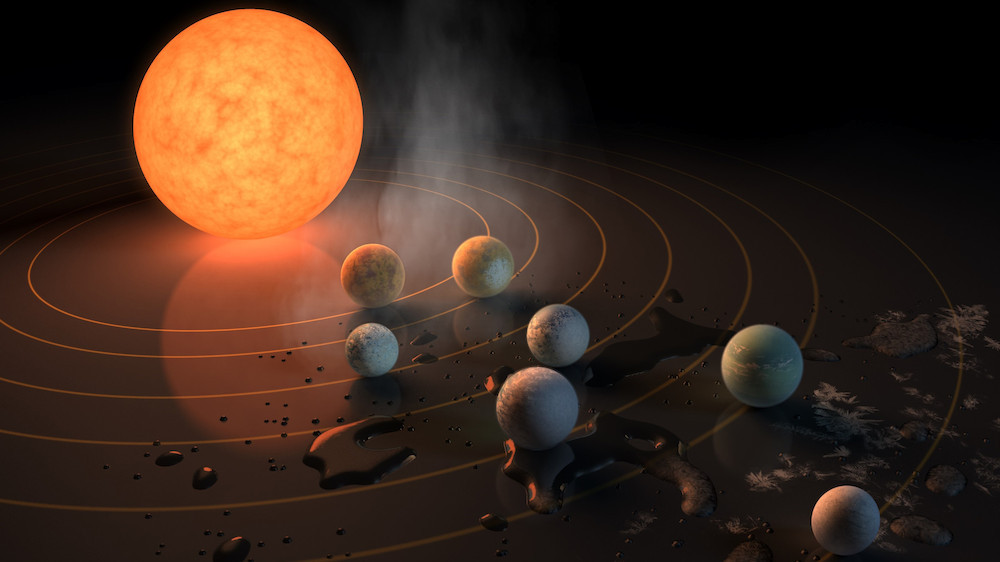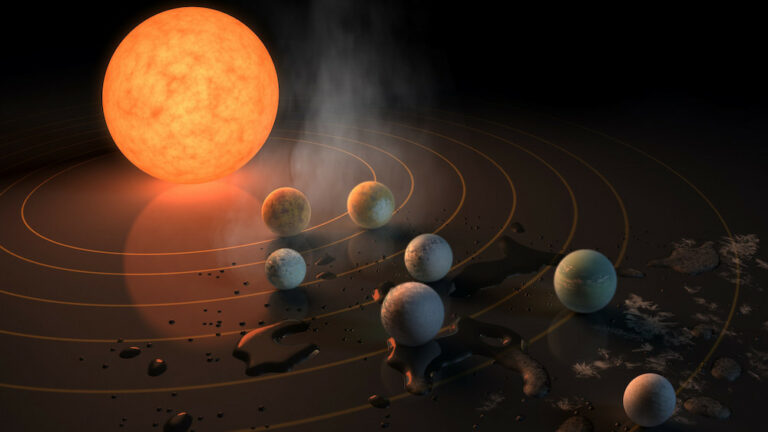Remote Planetary Systems Resemble the Structure of Our Solar System
Researchers from The Australian National University (ANU) have made a significant discovery regarding far-away planet systems. Contrary to the usual assumption that these systems are flared like bellbottoms, the researchers found that they are actually shaped like our own solar system, with multiple planets aligning with the host star on a flat plain. This finding, supported by NASA’s discovery of a seven-planet system on a flat plain, could potentially increase the likelihood of finding alien life.

According to Associate Professor Charley Lineweaver, other planet systems in the universe appear to be quite similar to our own solar system, suggesting that our system is not exceptional. The Kepler space telescope has played a crucial role in this research, detecting over 4,000 planets orbiting around 3,200 stars. While the majority of these stars have only one detected planet, 656 of them have multiple planets. The lead author of the research paper, Tim Bovaird, a PhD student at ANU’s Research School of Astronomy and Astrophysics (RSAA), highlights the wealth of data provided by the Kepler mission, allowing for detailed studies of planet systems beyond our solar system.
This research challenges previous simulations that assumed flared planet systems, as the observed data matched naturally without the need for such assumptions. The findings of this study will be published in The Monthly Notices of the Royal Astronomical Society.
Dr Lineweaver said the team’s result should demote the Kepler Dichotomy and allow more realistic interpretations of new planet systems.
This article is republished from PhysORG under a Creative Commons license. Read the original article.
Do not forget to share your opinion with us to provide you with the best posts !




0 Comments